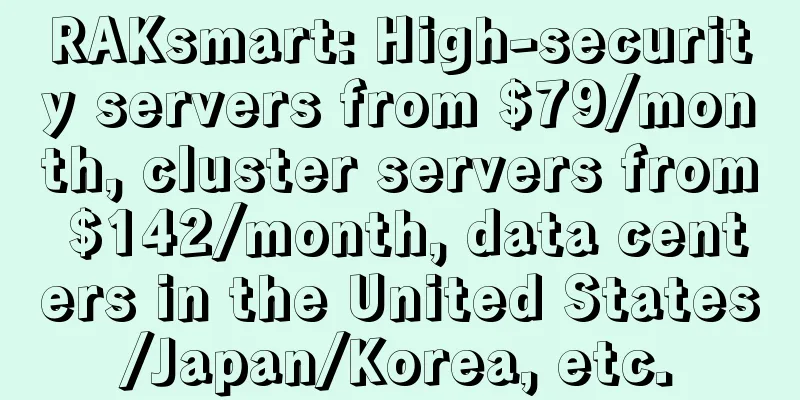The $75 billion C-band auction: Will the United States repeat the mistake of having money to buy pots but no money to buy vegetables?

|
According to foreign media reports, after the end of two rounds of auctions on Wednesday this week, the bidding amount for the C-band auction held by the US Federal Communications Commission (FCC) reached US$69.83 billion, exceeding the highest amount of US spectrum auction of US$44.899 billion set by the AWS-3 auction in 2015.
This is not over yet. The bidding will resume on January 4, 2021 after the US Christmas holiday. It is expected that the final transaction price of the US C-band auction will reach US$75 billion. So, why can the US C-band spectrum auction be priced so high? What are the hidden concerns after the spectrum auction price reaches a new high? Will it repeat the mistakes of the 3G era? Are there other suitable options besides auction? Two major driving factorsFor a long time, the US mobile communications market has been using auctions to allocate spectrum. In my opinion, the reason why the US C-band spectrum auction was able to raise a sky-high price of nearly US$70 billion is mainly driven by the following two factors: Driver 1: Driven by competitive demand. It is predicted that by 2030, the global digital economy will be worth about $3.8 trillion, and the economic revenue enabled by 5G technology will be about $1.49 trillion, of which operators will be able to obtain a market value of about $700 billion. Therefore, operators around the world are very optimistic about the business prospects of 5G. Whether it is the transformation of operators themselves or enabling the digital transformation of the industry, 5G is a focus that operators have to fight, and American operators are no exception. Spectrum resources are core resources for the development of mobile communication technology. Therefore, several major operator giants, including T-Mobile, AT&T, Verizon and Dish Network, all participated in the auction for competitive needs and spent a huge amount of money right from the start. Driver 2: Driven by the demand for wide network coverage. Last year, the United States took the lead in commercial 5G with millimeter wave deployment. Although millimeter wave can support 5G commercial services such as FWA (fixed wireless access) due to its advantages such as ultra-large bandwidth and ultra-low latency, millimeter wave is more suitable for some rural areas with underdeveloped fiber optic resources, as well as hot spots such as stadiums to increase bandwidth, supplement and expand hotspots. However, the major drawback of millimeter waves is their limited coverage range. Hands, bodies, walls, and even vegetation and raindrops can affect the propagation of millimeter wave signals. In addition, the cost is relatively high. Therefore, millimeter waves are not suitable for nationwide 5G wide coverage. The C-band spectrum belongs to the spectrum between 3.7GHz and 4.2GHz. The C-band can achieve higher speeds than low-band spectrum and has a wider coverage than millimeter wave spectrum. The major US operators are of course well aware of the advantages and significance of the C-band, so they are determined to obtain it at all costs. Hidden concerns behind sky-high prices Although US operators are willing to spend a lot of money to compete for C-band resources, can they sit back and relax after actually obtaining the C-band? I'm afraid not! According to GSMA's research, high spectrum prices are often associated with poor network coverage and expensive but low-quality information services, which seriously affect consumers' experience of services. Spectrum auctions are not always effective, and there have been repeated cases of failure after spectrum was acquired at sky-high prices. This is especially true when some governments’ deficits widen and they try to increase fiscal gains and help balance their budgets by auctioning spectrum at high prices, which will exacerbate the increase in such failures. Back in the 3G era, some European operators spent a fortune on licenses and frequency bands, but ended up losing a lot of money. Due to the huge sums of money spent on spectrum purchases, some European operators had little money left to build networks, support ecosystems and application development, and the industry did not have much terminal support, which also led to the failure of many European operators in 3G. Therefore, US operators should carefully consider whether they will repeat the mistakes made by European operators in the 3G era. Allocation method selection In fact, as the pace of global 5G spectrum auctions has accelerated in recent years, auctions are considered by most countries to be the fairest and most effective means of spectrum allocation. However, the situation where operators are unable to make ends meet due to sky-high auction prices is definitely not what they want to see. In fact, auctions are not the only way to allocate spectrum. GSMA believes that auctions should not be the only means of spectrum allocation to be considered. In some cases, administrative allocation is a better choice. For example, China's government allocation of spectrum and issuance of 5G licenses are worth learning from. China's four operators obtained the corresponding 5G spectrum through administrative allocation, which was released by the Chinese government and regulators after research and consultation. It turns out that these frequency bands are very consistent with the needs of the operators themselves and are of great benefit to their respective 5G deployments. Overseas, Finnish regulators and national operators agreed to share 5G spectrum equally at a reasonable price, which also benefits all parties without the need for spectrum auctions; Swiss regulators do not use auction revenue as the final consideration when allocating 3.5GHz spectrum, but instead adopt a more effective allocation mechanism to ensure that Switzerland can provide excellent 5G services. In summary, the method of 5G spectrum allocation is not a single-choice question. However, no matter which method is chosen, auction revenue should not be the final consideration, but should return to the original intention of supporting the rapid, healthy development of the 5G industry. |
Recommend
uCPE/vCPE and the network: You are in me, I am in you
IDC believes that the acceptance and adoption of ...
In the 5G era, will programmers lose their jobs or continue to be popular?
Recently everyone has been discussing such a thin...
It is estimated that by the end of 2020, the number of 5G users in North America will reach 20.9 million
North America is currently one of the most develo...
How many hosts can 100 IPs serve?
I have calculated this once in an old article, bu...
IPv6 Security Thinking: Risk Analysis of Recursive DNS in IPv6 Networks
DNS (Domain Name System) is an important core inf...
China Radio and Television faces three major challenges on its 5G journey
Since the Ministry of Industry and Information Te...
22 pictures to explain OSPF: the most commonly used dynamic routing protocol
Hello everyone, I am Xiao Fu. RIP Defects When ta...
Banwagong: Los Angeles CN2 annual payment starts from $46.5, 1-10Gbps US CN2 GIA/Hong Kong CN2 GIA/Japan CN2 GIA
Bandwagonhost VPS was founded in 2012 and is affi...
Huawei Consumer Business Group focuses on user experience and builds high-quality cloud services for the world
[Shenzhen, China] On April 12, 2017, the 14th Hua...
After the confession failed, I understood the principle of TCP implementation
A few days ago, I posted a circle of friends and ...
GreenCloudVPS 9th anniversary, $15/year KVM-2GB/20GB/2TB/San Jose and other data centers available
GreenCloudVPS recently launched its 9th anniversa...
Finally! Huawei officially announced that it will start collecting 5G patent fees, Apple and Samsung will have to pay...
Yesterday (March 16), Huawei stated at the "...
Kunpeng spreads its wings and walks with youth | Kunpeng University Tour is about to enter Shanghai Jiao Tong University, exciting "spoilers" in advance!
At 1:30 pm on December 4, the Kunpeng University ...
DMIT Japan International Line KVM monthly payment 20% off from $8.72, annual payment 50% off, supports PayPal/Alipay
DMIT.io is a foreign hosting company founded in 2...
The era of ubiquitous smart devices and edge computing is coming
Edge computing is on the rise. Are you ready for ...









